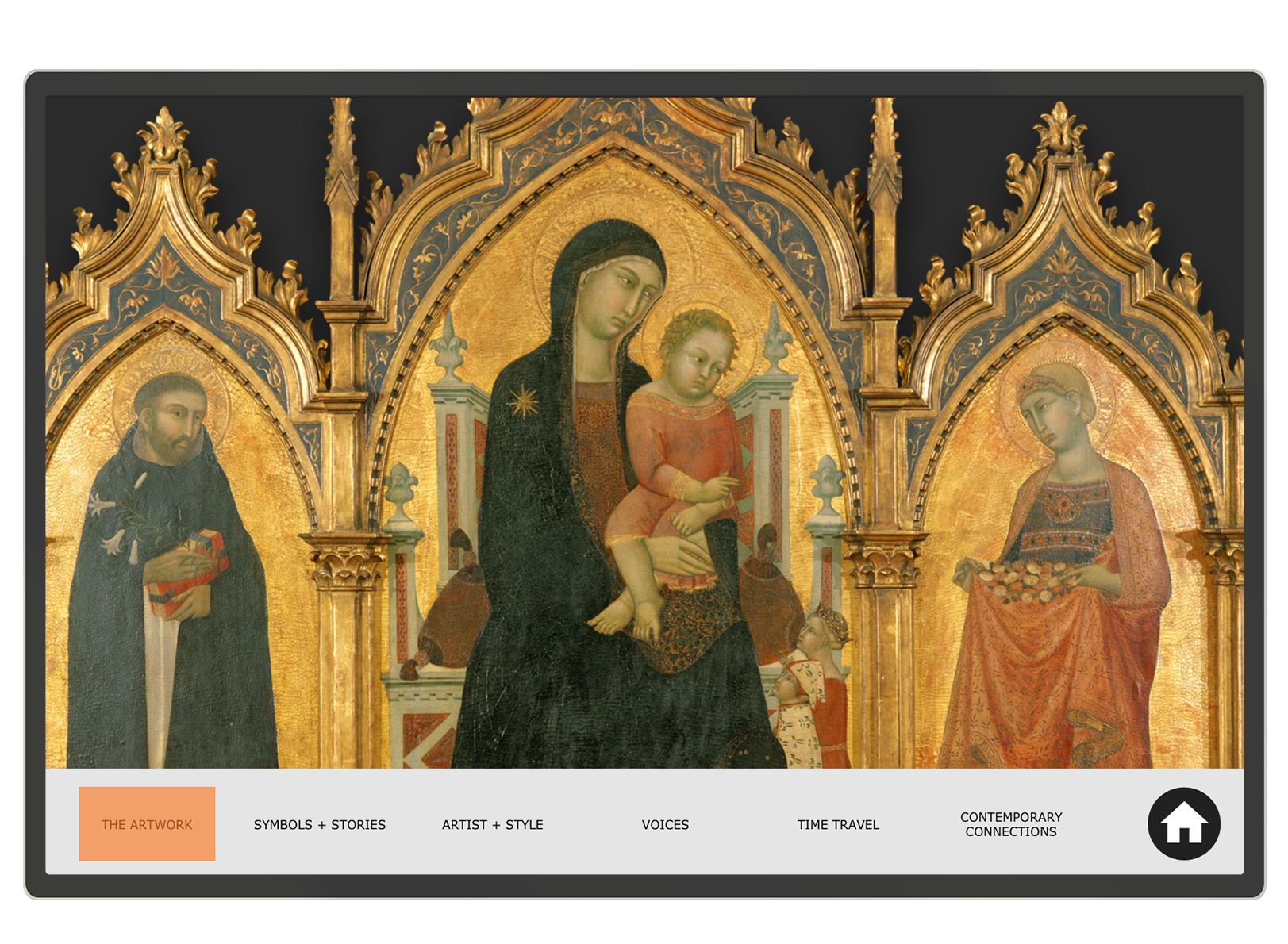
Online Exhibitions vs. Online Collections
Depth vs. Breadth. Story vs. Search.
Online Exhibitions vs. Collections Online: What’s the difference?
Online Exhibitions and Collections Online are both virtual tools that museums use to help their audience discover the museum collection at their own pace and according to their personal interests. We’re asked often when to deploy an online exhibition versus when to expanding the content already living in their online collection.
Here is our quick guide to understanding the differences and best practices. To illustrate, we compare the collections online record for the Madonna and Child on the Lowe Art Museum website to the same artwork as it appears in the museum’s online exhibition about its renaissance art collection.
Collections Online
Collections Online (also sometimes called Collections Search) are usually accessible on the museum’s website and offer comprehensive access to the publicly available digitized versions of the artworks and objects in the museum collection. Collection records typically share key pieces of information such as the creator, creation date, materials, geography, and and an abstract or wall label text. Sometimes there is additional content such as essays, links to related objects, and collection items grouped by theme or keyword.
Collections online are searchable databases built on top of the museum’s existing collection management software and DAMS. The audience is frequently scholars, students and researchers as well as enthusiasts. It offers a browsing experience with sophisticated search and filter capabilities.
Quick Guide to Collections Online:
- Breadth over depth: high quantity of records
- Emphasis on filtering and searching database.
- Presents brief, standardized information about a record.
- Standardized design and presentation for easy reference and browsing.
- Online Exhibitions in this context tend to be limited to grouping collection records.
- Limited focus on interpretation, narratives, or interactivity.
Online Exhibitions
Online exhibitions are also often available directly from the museum website, typically as immersive microsites. In contrast to online collections, they focus mainly on providing a curated, story-driven experience. Much like a physical exhibition, the visitor explores a defined facet of the collection with emphasis on providing narrative-based interpretation for audience education and engagement. The audience for online exhibitions tends to mirror the in-person museum visitor.
Quick Guide to Online Exhibitions:
- Depth over breadth: curated selection objects from the collection.
- Narrative-driven experiences that guide visitors through a story.
- Digital companion to, or, the virtual version of a physical exhibition.
- Emphasis on multi-media and design to support an immersive experience.
- Interactivity for engagement and learning rather than simply searching for records.
While an online exhibition may pull content directly from the collections management software or collections online (a capability offered on the CultureConnect platform), it is not mandatory because online exhibitions typically showcase a curated selection of objects, media and original interpretation rather than showcasing a museum’s full collection.
How are These Experiences Connected?
These experiences can certainly reinforce each other. For example, the narrative approach to online exhibitions may stoke a visitor’s interest in a subject, perhaps leading to their navigating over to the collections online to discover more. Similarly, searching through the collections online, a visitor may wish to learn more in-depth stories, engage with multi-media interpretation, or have an interactive experience that leads them to a related online exhibition.
Both experiences can leverage the data and media in the collections management software and DAMS, just to different degrees of depth and breadth.
Dive Deeper
See a demo by contacting us here or at hello [at] cultureconnectme.com
Check out the Lowe Art Museum Online Exhibition.
Dive into the Collections Online White Paper.




